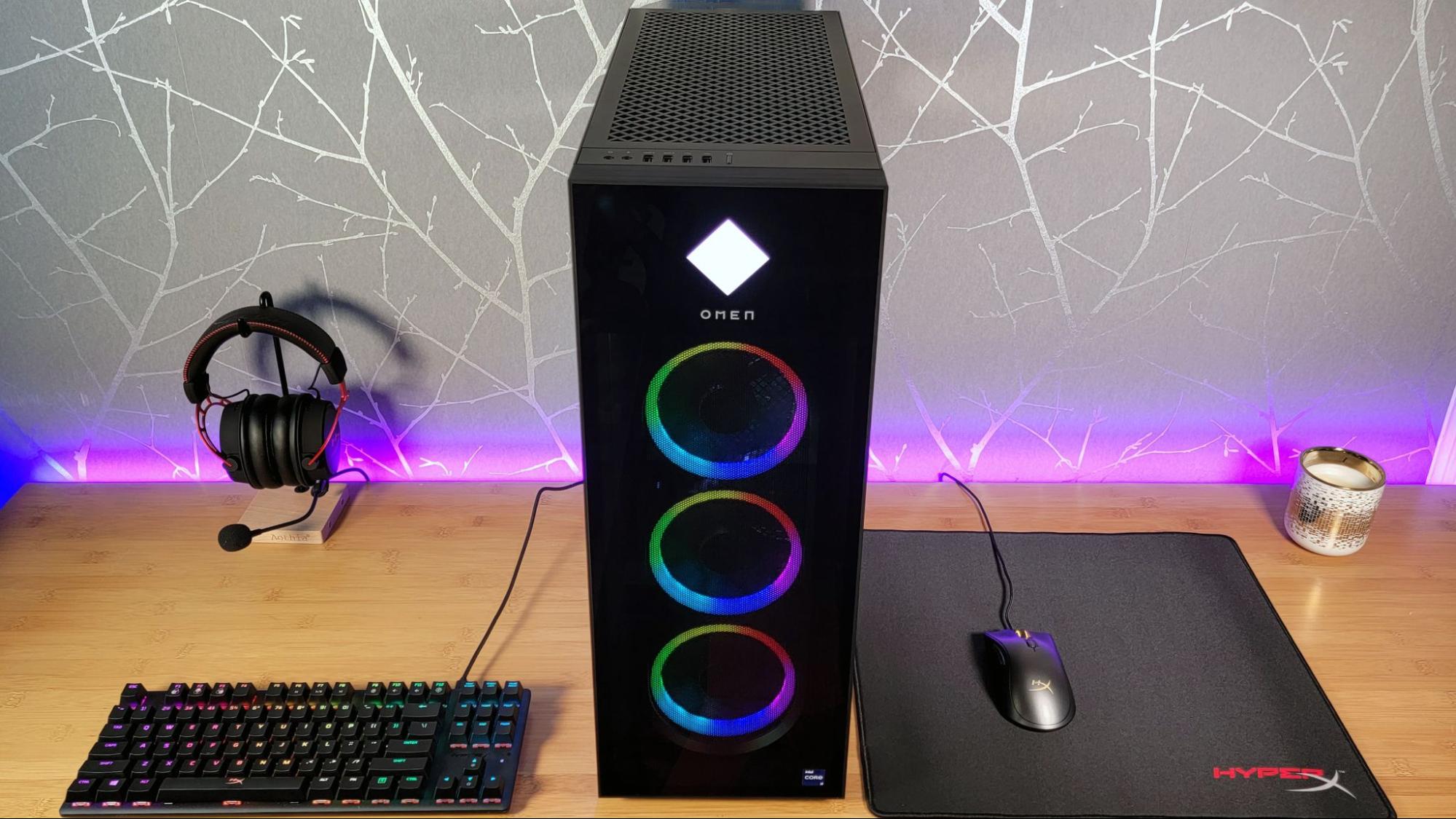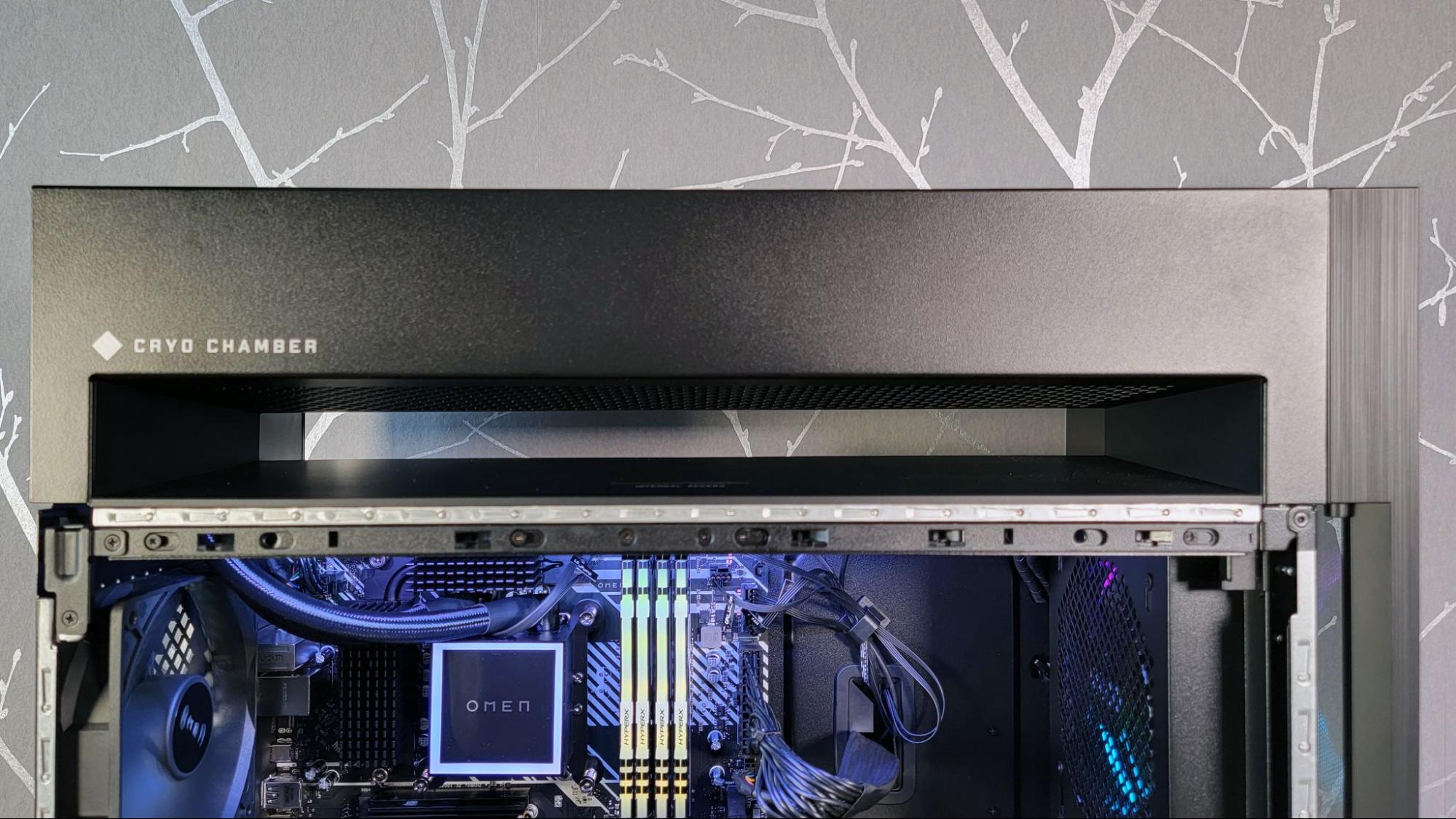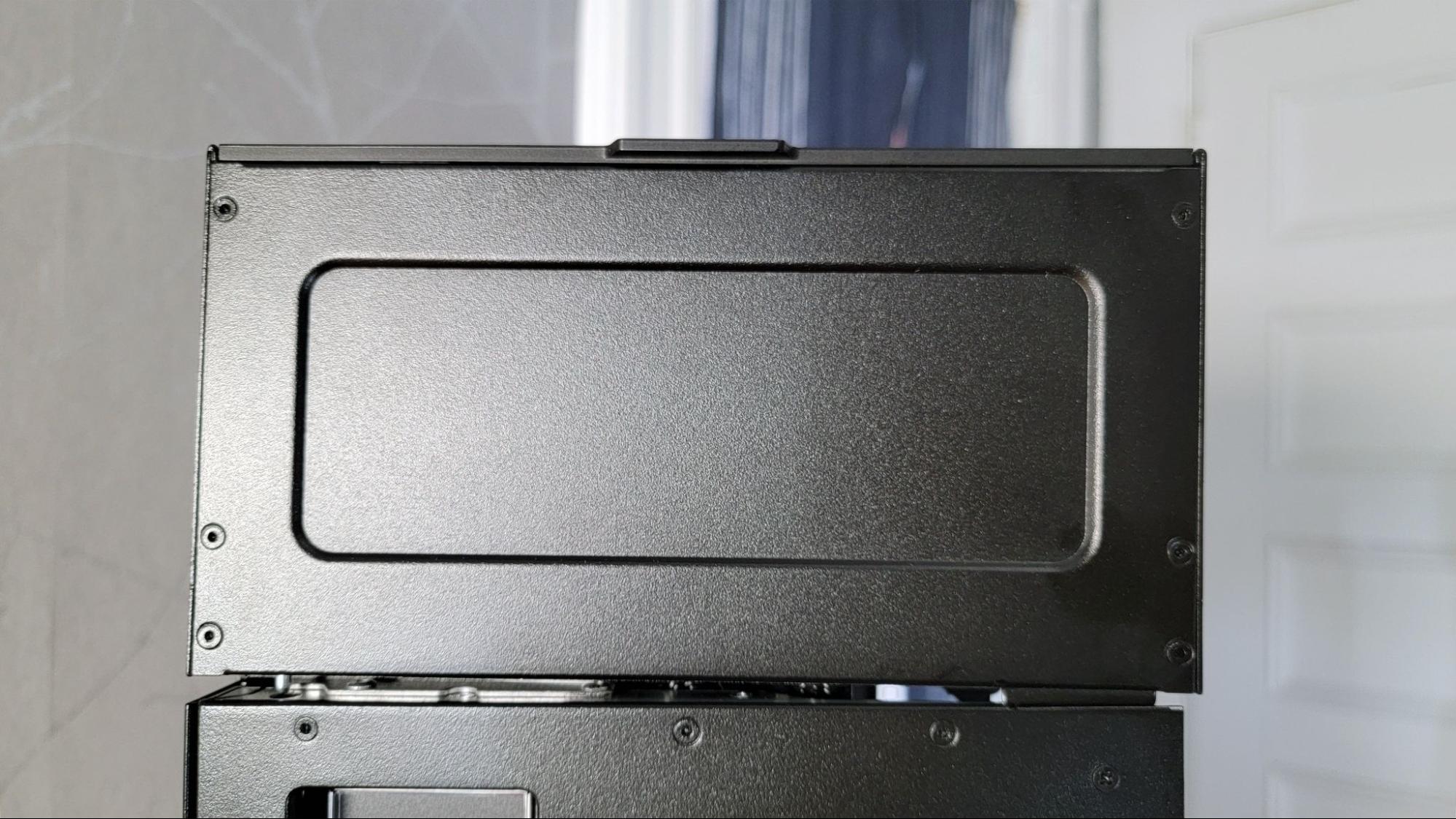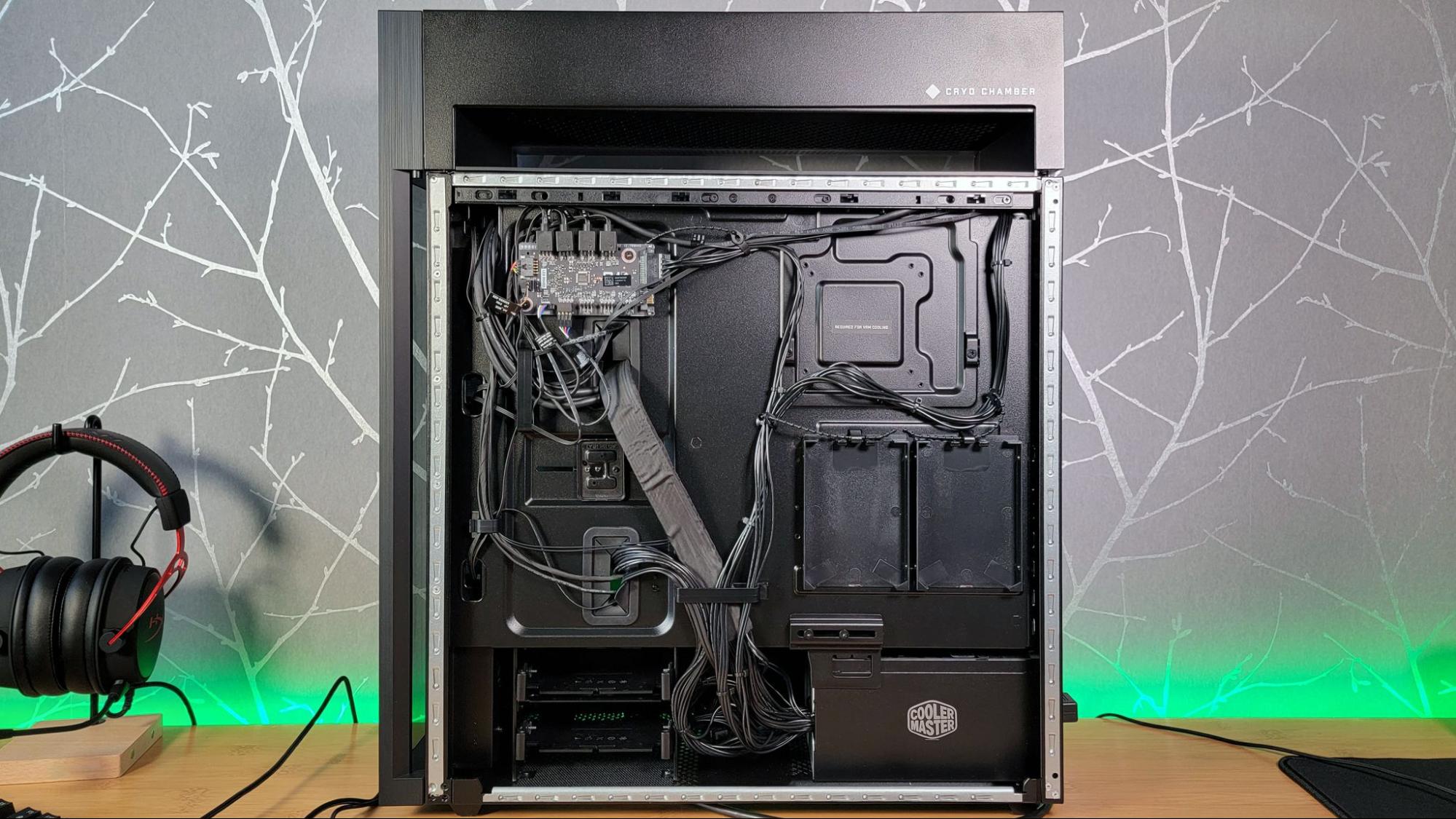HP's Latest Omen 45L Gaming PC Moves the Radiator Outside the Case
External Cryo Chamber keeps things cool.
HP's Omen gaming brand often occupies a spot on our Best Gaming PCs list, thanks to affordability and, in recent years, a shift to name-brand parts. The latter is still a focus with the company's new Omen 45L, but the case gets noticeably bigger, thanks to an external "Cryo Chamber" atop the case. It's separated from the internals of the case, allowing cool outside air to get sucked into the 240 mm radiator housed inside.
The front also has a similar air gap, allowing for the three 140 mm RGB fans to pull in fresh air while still giving the front of the system that ubiquitous glossy glass look.
Configurations of HP Omen 45L
While we haven't had a chance to fully test the system yet, performance shouldn't be much of a concern, as HP will sell the Omen 45L with up to an Intel Core i9-12900K and an RTX 3090. Pair that with 64GB of DDR4 (sorry, DDR5 die-hards) and a pair of roomy 2TB NVMe SSDs (and, naturally, Windows 11) and you get our review configuration, which HP says will sell for about $5,000.
If that's too much overkill on your wallet, the company will also offer up a $2,299 configuration based around a Ryzen 7 5800X and an RTX 3070. The system can also be configured to order, with a slew of component options, most of which are name-brand and standard. The SSD is a WD Black model. Cooler Master makes the power supply (an 800W 80 Plus Gold model in our configuration) and the RAM is HyperX branded (unsurprising given HP bought HyperX last year).
HP is doubling down on its effort to incorporate standard, name-brand components in its Omen gaming PCs, and that's good both for peace of mind and future upgradability. But the company would do well to expand this policy to its motherboards.
The Omen-branded Micro-ATX board HP included in our configuration looks the part, with some elaborate stenciling and big VRM heatsinks. But it's far from as feature-packed as you might expect in a system that costs thousands of dollars.
Aside from the lack of DDR5 (which really doesn't matter for gaming), there's no mention anywhere of PCIe 5 support. The board also has just two M.2 PCIe Gen4 slots, and the rear IO is quite barren with just six USB ports and not much else. There are, somewhat surprisingly, two USB-C ports here, but note that one is basically old-school USB 3.0, labeled at 5 Gbps (the other is 10 Gbps). There are, at least, four more USB-A ports at the top of the case, alongside the power button and separate headphone and mic jacks.
Cryo Chamber on HP Omen 45L
The top Cryo Chamber is arguably the Omen 45L's most interesting feature, as it houses the 240 mm AIO radiator outside of the main part of the case, giving it a large gap to pull in cool air and expel it up top. HP says this results in CPU temperatures that are up to 6 degrees celsius lower under full load. And some quick testing tells us that CPU temperatures aren't an issue here.
Get Tom's Hardware's best news and in-depth reviews, straight to your inbox.
When we ran our typical Metro Exodus stress test, simulating a half-hour of gaming by looping the benchmark 15 times, we saw a brief peak of 71 degrees Celcius early on, which is warm but far from the 100 degrees C you'd need to hit for the CPU to throttle. And the 71 degree measurement was an anomaly. After that early spike, temps settled down to an average of 54 degrees C for the totality of the test run. While we don't have comparison data for the same test run on other Alder Lake prebuilt desktops, cooling performance here more than adequate for stock performance. And given that this is a prebuilt gaming PC from a big-name brand, chances are the vast majority of buyers will be running at stock speeds.
The system was also very quiet for a PC loaded with high-end parts. But that likely has more to do with the sheer size of the (45-liter) chassis than the separate Cryo Chamber.
All that said, one other aspect of the Cryo Chamber has us a little worried. The company claims the Cryo Chamber is also designed to be a handle to help you move the system around. And you'll probably want to use it given how big and heavy the Omen 45L is.
But on our unit at least, the upper chamber arrived partially detached at the back of the case. HP says this likely happened during shipping, but there was no noticeable damage to the box. And there was no other visual damage or bent or crumpled portions of the system itself to indicate that it had been dropped or crushed. Hopefully for HP, this is just an isolated shipping or early manufacturing issue. But it's also another area where, at least in this isolated instance, the case system doesn't exactly look or feel like a rig that you'd want to pay thousands of dollars for.
Our issue with the rear of the Cryo Chamber aside, the Omen 45L is an attractive, interestingly designed system that's powerfully configured and looks to be well cooled. We look forward to putting it through our full testing suite and comparing it to other Alder Lake gaming PCs–especially when it comes to temperatures.
If you like the look of the Omen 45L but are more of a DIY PC builder, HP will be selling the Omen 45L as a standalone ATX case as well. It will ship with an RGB light strip and an internal RGB/ARGB lighting hub. But you'll have to provide your own RGB intake fans. HP says it will sell the case with a single non-RGB 120mm exhaust spinner.
The case may be better suited to DIY builds than as HP sells it as a prebuilt PC, because there's room for radiators larger than the 240 mm model that was included in our rig. And unless you're aiming for serious overclocks, the Cryo Chamber cooling is arguably overkill anyway. And if you were going to do that, you'd probably also want a more robust motherboard than what HP offers–with more ports as well.
The company also hasn't said how much it will be selling the Omen 45L case for. But you can bet it will land closer to premium pricing than the budget realm.
After a rough start with the Mattel Aquarius as a child, Matt built his first PC in the late 1990s and ventured into mild PC modding in the early 2000s. He’s spent the last 15 years covering emerging technology for Smithsonian, Popular Science, and Consumer Reports, while testing components and PCs for Computer Shopper, PCMag and Digital Trends.
-
BillyBuerger It's not a bad idea, but not well executed. Especially if they are going to make mention of using this top part like a handle to move it around. It should be built as part of the whole case and not just slapping this thing on top of an existing case.Reply







